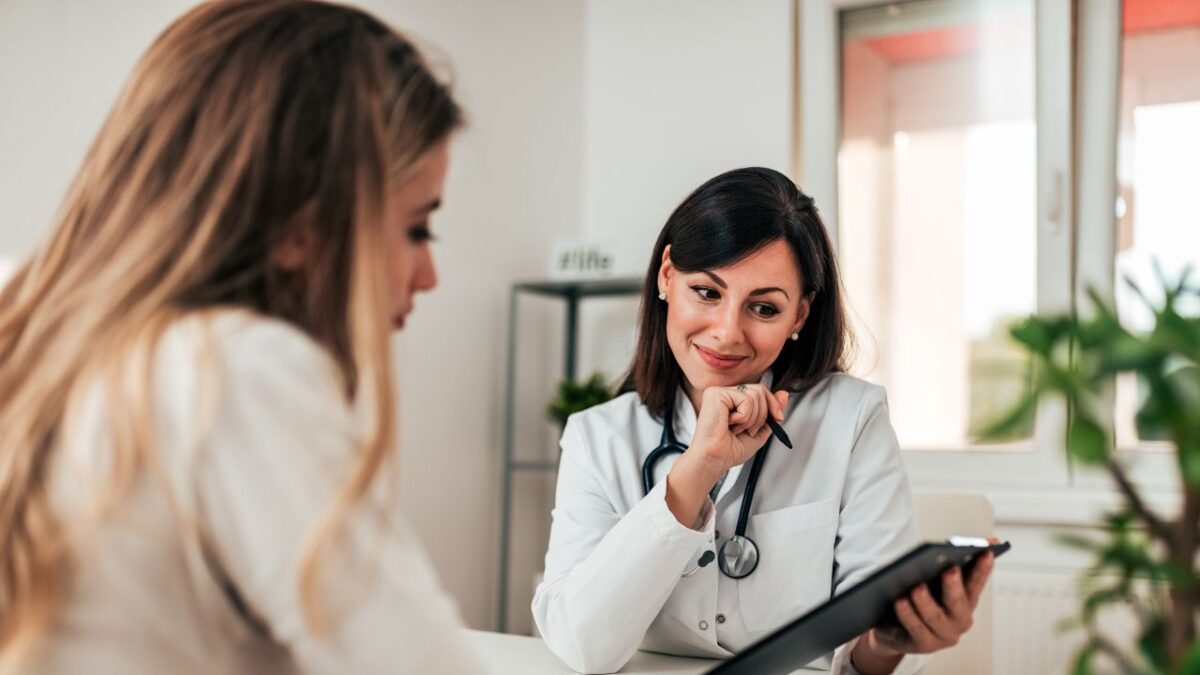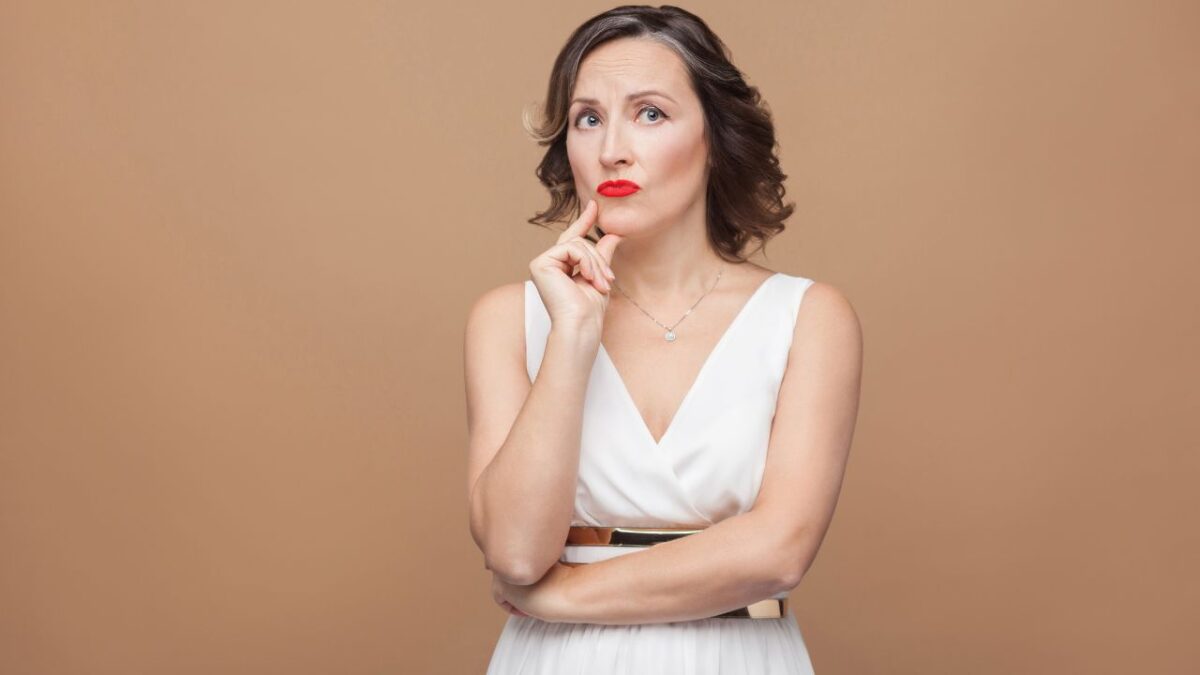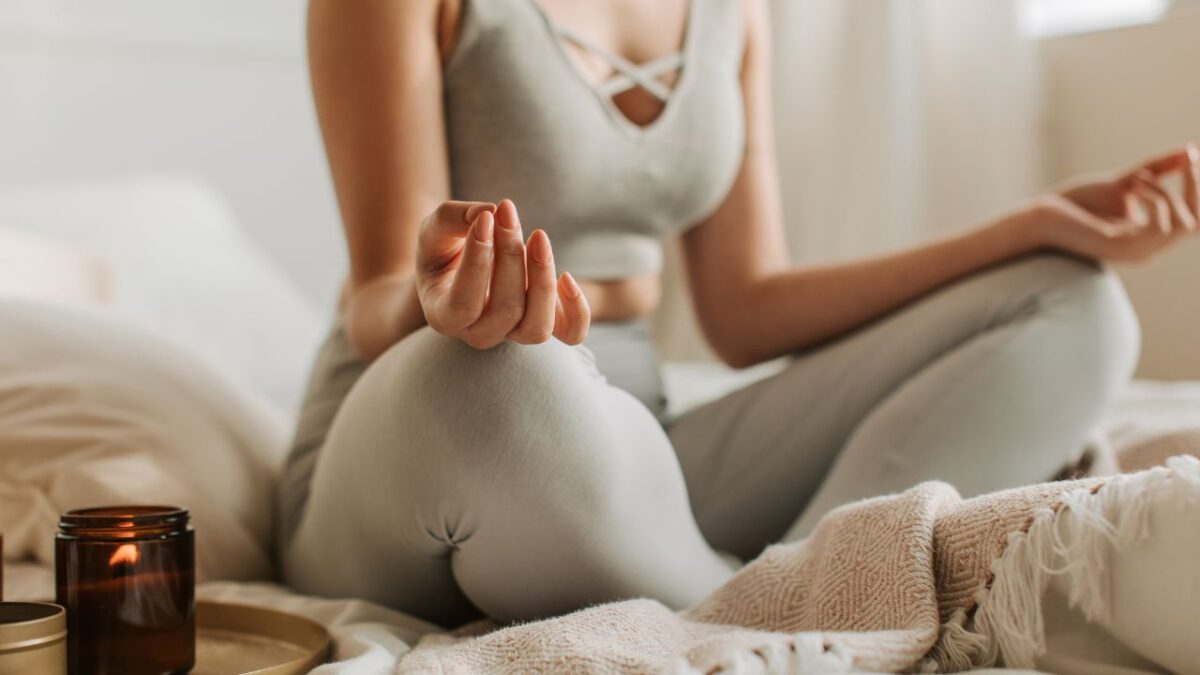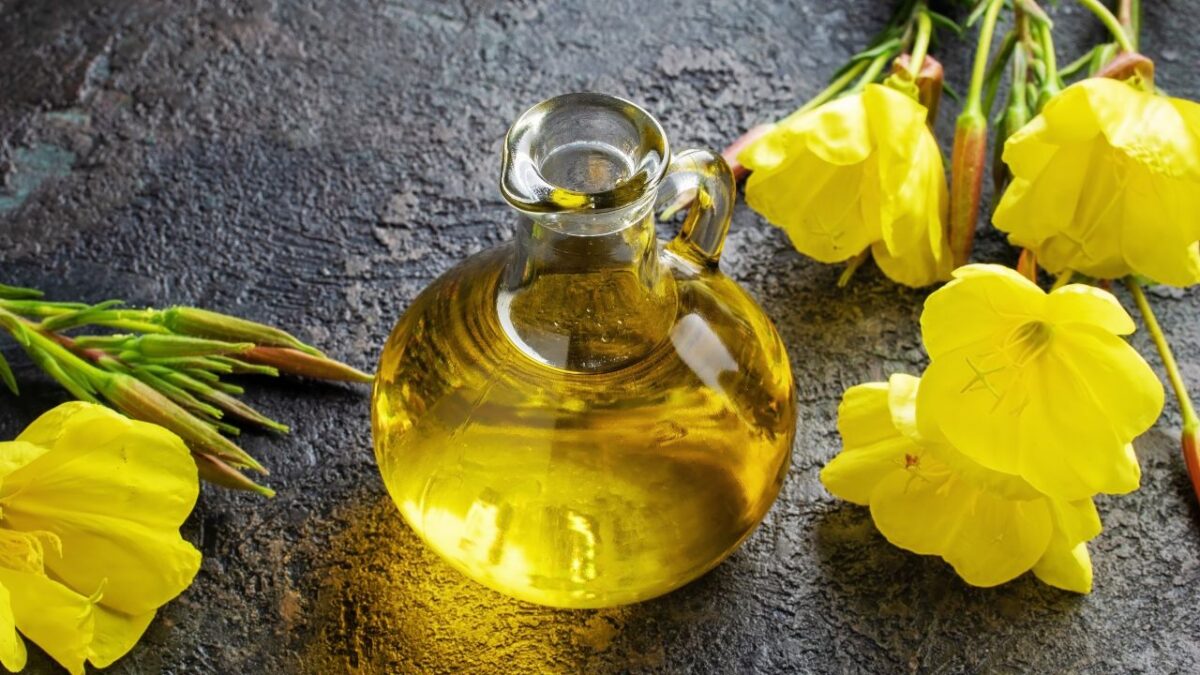Mindful Eating during Perimenopause: Turn Your Meals Into Moments of Power
It’s a moment of transition—you may feel it in your body, your appetite, your energy levels. Your usual eating rhythms might seem off, cravings can feel stronger, fullness may not arrive when you expect it, and you might find your mood tied to what (and how) you eat. What if one of the most transformative tools before you is simply how you eat, not just what you eat?
Mindful eating, combined with food appreciation and seasonal nutrition, can be your allies. These aren’t trendy buzzwords—they’re practical, grounded ways to bring your body back into dialogue with your food, your senses, and your inner wisdom. They help you shift from reacting to your body’s cues to listening and responding—which is especially important in this phase of life.
What follows is a deep dive into how to make eating a nourishing, intentional act: one that supports hormone balance, metabolic resilience, mood, and vitality. You’ll find actionable steps, helpful practices, and a guided meditation to integrate right away. And yes—you’ll want to keep reading.
Why the way you eat matters now
As hormone levels ebb and flow, your body’s signals around hunger, fullness, energy, and digestion don’t always behave like they did. Some shifts you might notice:
- Appetite that seems to come out of nowhere—or that simply doesn’t register when it used to.
- Cravings for sweet, salty or processed foods that feel more persistent.
- Slower metabolism, increased fat around the mid‑section, or muscle loss creeping in.
- Digestive changes, sleep disruption, mood swings—all of which affect eating behaviours.
- A greater need for nutrient‑dense foods, especially for bone, brain, cardiovascular and gut health. (See review: “The Importance of Nutrition in Menopause and Perimenopause” ) (mdpi.com)
In short: the moment you sit down to eat isn’t just about calories—it’s about communication with the body. When you bring awareness to the how and why of eating, you start to reclaim that communication.
Research supports this: studies find that mindful eating is linked to lower intake of added sugars, improved eating awareness, and better dietary patterns. (ScienceDirect) Seasonal changes also matter—food intake, activity, body composition all shift with seasons (and this has implications for mid‑life women). (cdn.nutrition.org)
There’s a clear opportunity here: by pairing what you eat with how you eat, you shift from autopilot to empowerment.
What it looks like: Mindful Eating + Food Appreciation
Mindful eating is bringing full presence to your meals: noting how the food looks, smells, tastes; tuning into hunger and fullness cues; eating without distraction; making peace with your choices; honouring your body’s responses.
Here’s how you can bring it into action:
Before the meal
- Pause for 1 minute: take a couple of deep breaths. Notice how your body feels—not yet what you’ll eat, but how you feel about eating.
- Ask yourself: “Am I actually hungry? What am I hoping this meal will give me—energy, comfort, nourishment, connection?”
- Serve yourself a reasonable portion. Sitting down with a plate you chose for yourself begins the process of ownership.
During the meal
- Eat slowly. Chew deliberately. Pay attention to textures: the crispness, the softness, the chew.
- Between bites, pause—put down the fork if you like—and check in: “What am I tasting? How full do I feel now? Is my body changing from bite to bite?”
- Minimise distractions: phones, TV, multitasking all disrupt your ability to read your body. One quiet meal can change your relationship to all meals.
- Honour each bite: savour it. When you enjoy your food, you often eat less (because satisfaction comes sooner) and your body gets more out of it—not just digestively, but emotionally and hormonally.
After the meal
- Wait 10–15 minutes before deciding if you want more—your body often needs a moment to update.
- Reflect in one sentence: “After that meal I felt ____, and noticed ____. Next time I will ____.”
- No judgement. Just observation. Over time you’ll see patterns—not to shame yourself, but to strengthen connection.
Food Appreciation goes hand in hand. It means recognising the journey: the colour of the dish, the source of the ingredients, the effort (even if minimal) that went into preparing or selecting them. It means meals become an event rather than a closing act of a busy day.
When you build appreciation, your brain links positive emotions to nourishment—not guilt, not scarcity, not hurried bites. And that changes how you eat.
Seasonal Nutrition: Aligning with Nature’s Rhythm
When you eat seasonally, you automatically increase variety. You automatically support your gut microbiome with new fibres and phytonutrients. You automatically reduce reliance on processed, out‑of‑season or “anytime” foods that often contribute to metabolic and inflammatory stress.
Here’s what the research and practical wisdom suggest:
- Nutrient‑rich seasonal produce tends to be fresher, fuller of flavour, and often higher in micronutrients. That matters when your body is navigating hormone change. (Nikki Durnford at Green Dene Nutrition)
- Studies show mid‑life women’s body composition shifts with seasons: energy intake up, activity down in cooler months, and fat increases. (ScienceDirect)
- When you combine seasonal eating with mindful eating, you harvest two powerful effects: high‑quality food plus enhanced awareness about how it affects you.
Here’s how you can translate this into your setting (for a tropical/sub‑tropical or Philippines‑type climate):
Wet/Cooler Season (or when you feel you need metabolically some grounding)
- Root vegetables (sweet potato, taro, carrot)
- Leafy green varieties available locally (e.g., malunggay, kangkong)
- Fatty fish or local fish rich in omega‑3s (bangus, tuna)
- Warming spices: ginger, turmeric, a little chili if your digestion is strong
- Hydrate with herbal teas (e.g., ginger tea) or warm waters
Hot/Brighter Season (or when you feel you need cooling/lightness)
- Fresh tropical fruits (papaya, mango, watermelon)
- Crisp vegetables: cucumber, salad greens, fresh herbs
- Light proteins: grilled fish, tofu, legumes
- Infused water, coconut water, herbal iced teas
- Meals with bright colour: orange, red, purple, green—each colour signals phytonutrients that support your body’s shift
Transition Weeks/Months
- Mix both approaches: e.g., half plate warm roasted vegetables, half plate fresh salad
- Try a new produce you haven’t used before—variety = microbiome support
- Adjust based on how you feel (energy, digestion, mood)
Nutrient Priorities
- Protein: Especially important now because lean muscle mass tends to decline and metabolism shifts.
- Calcium + Vitamin D: Bone health becomes more critical.
- Healthy fats: Omega‑3s help inflammation, hormone production.
- Fibre + complex carbs: For gut health, satiety, blood sugar.
- Phytonutrients: From colourful plants—which seasonality helps provide.
By building your weekly grocery list around what’s in season plus “needed nutrients,” you create a structure that supports mindful eating—not just doing the same foods every week out of habit.
Putting it all into practice: a 4‑week roadmap
Here’s a plan you can follow to make this real. Customize it to your life, schedule and local produce; the goal is progress, not perfection.
Week 1 – Presence Kick‑off
- Choose one meal this week to eat with full presence (no screens, no rushing).
- Before starting, take three slow breaths, set an intention: “This meal is nourishment for my body.”
- After the meal, write one sentence: what I noticed.
- Choose one seasonal produce item and include it in one meal this week.
Week 2 – Appreciation & Ritual
- Before each main meal: pause, look at your plate, note colour/texture.
- At your mindful meal: chew slower, put fork/utensil down between bites.
- Introduce a small ritual: favourite plate, napkin you like, soft background (if time allows).
- Shopping list: 2–3 seasonal produce items + focus protein + healthy fat + fibre source.
Week 3 – Balanced Plate & Body Check‑in
- Every major meal: aim for lean protein + seasonal vegetable + complex carb/fibre + healthy fat.
- Before eating: ask hunger scale (1‑10) and target starting when you’re ~3‑4, stop around ~7.
- After the meal: check in again at 30 minutes—how do you feel?
- Try one new produce/meal combination.
Week 4 – Reflection & Sustaining Habit
- Review your notes: what patterns emerged? Choose one habit you’ll carry forward (e.g., the three‑breath pause, the utensil‑down between bites).
- Share one mindful meal with someone (connection supports satisfaction).
- Prepare a “go‑to” mindful meal: something you can pull together easily and enjoy repeatedly.
- Use the short pre‑meal mindful eating meditation (see next) before your main meal for the week.
Pre‑Meal Mindful Eating Meditation
Here’s a simple but powerful ritual to do just before your main meal. It takes just 2–3 minutes and sets the tone.
- Sit down at your table. Set aside your phone (silent or face‑down).
- Close your eyes. Take three slow, deep breaths: inhale for 4 seconds, hold 1 second, exhale for 6 seconds. With each exhale, imagine releasing any stress or hurry.
- Open your eyes. Look at your plate. Notice the colours, shapes, textures. Think: “This food travelled to me.” Acknowledge the effort, the source, the presence.
- Place your hand gently on your chest or belly. Ask: “What am I actually hungry for? Is it food? Or something else—rest, connection, comfort, distraction?” Wait for the answer.
- Ask: “What do I genuinely want to feel after this meal? Energised? Calm? Full? Connected to my body?” Hold that vision.
- Quietly say (or think): “This is my nourishment. I receive it. I honour it. I listen to its effect on me.”
- Begin eating. Chew slowly, breathe between bites, notice how your body responds.
You can return to this meditation any time you feel rushed, disconnected, or simply want to shift the tone of your meal. It’s that moment of presence that anchors everything else.
Common challenges and how to work through them
Because real life happens. Here are some common bumps—and how you can navigate them.
Challenge: “I’m too busy/always multitasking at meals.”
- Pick just one meal a week this week to practise full mindfulness. That small win starts the change.
- Gradually expand to more meals if it works for you.
Challenge: “Eating slowly feels weird / I feel like others are watching.”
- Remember: you’re doing something different for your body—not performance for others.
- Try it when you’re alone first if needed, then carry the calm into company.
Challenge: “Cravings hit hard—especially for sugary or salty snacks.”
- Cravings are often not about lack of willpower—they’re signs. Your body/hormones/gut are signalling.
- Use the “pause” check: are you hungry, or stressed, bored, tired? Choose accordingly: maybe movement, a drink of water, connecting with someone.
- When you do eat a craving, do it mindfully. No guilt. Notice how it feels, how you respond.
Challenge: “Seasonal produce is expensive / my market has limited variety.”
- Do your best: even one seasonal item a week is helpful.
- Frozen produce counts. Variety matters more than perfection.
- Use produce swaps: whatever is abundant locally = your ally.
Challenge: “I have other health conditions (e.g., diabetes, thyroid, past eating disorder).”
- Mindful eating and seasonal nutrition still apply—but tailor them with your healthcare team.
- If you’re managing blood sugar, your medical/food plan may have specifics—integrate mindful awareness into that plan.
Why this approach supports your hormone health
Focusing on how you eat is more than “nice to have”—it is strategic for this phase of life.
- Your body’s hunger/fullness cues (via ghrelin, leptin) can be disrupted by fluctuating hormones. Mindful eating restores connection. (The Food Cafe)
- Nutrition’s effect on hormone signalling is well‑documented: nutrient intake, quality of calories, dietary patterns affect hormone sensitivity and bodily responses. (IFM)
- Seasonal eating supports a diverse gut microbiome, which plays a role in hormone metabolism, inflammation, mood and energy.
- Research shows that dietary patterns in midlife women influence risk markers for cardiovascular disease, insulin resistance, bone outcomes. (mdpi.com)
- Mindful practices reduce stress and emotional eating, which means lower cortisol, better sleep, calmer metabolism—you’re supporting your body holistically, not just with food.
In other words: when you combine presence (mindful eating) + intentional food choices (seasonal, nutrient‑rich) you give your body an environment to respond to the transition—not resist it.
Final thoughts
You’re in a season of change—and that doesn’t mean things have to “just get worse” or you “must put up with” things you don’t like. This is an invitation to shift how you relate to food, your body, your nourishment.
When you pause before a meal, when you allow yourself to savour a bite, when you choose what’s fresh, seasonal, vibrant—you’re saying: I matter. My body deserves this. That message is powerful.
The changes you make won’t all happen overnight. You may have slip‑ups. You might forget to pause. You may reach for the phone mid‑bite. That’s OK. Patience + consistency beat perfection every time.
Start with one meal. Use the meditation. Choose one seasonal produce. Notice how you feel—not just immediately, but after the meal, after the day. Track: better sleep? calmer cravings? improved mood? Lean into those wins.
Your body is doing important work. It’s shifting, adapting, recalibrating. And you can meet it with kindness, awareness and nourishment—not just survival. The journey ahead is one of empowerment.
If you’d like, I can create a printable “Mindful‑Eating + Seasonal‑Nutrition Checklist” for you or a monthly seasonal produce guide with local‑friendly (Philippines) suggestions. Let me know and I’ll send it your way.
References
Adams, P. (2024). Mindful eating: Nourishing the body and mind during perimenopause. Synergy Nutri Wellness. Retrieved from https://www.synergynutriwellness.com/single-post/exploring-mindful-eating-nourishing-the-body-and-mind‑during‑perimenopause (synergyannapolis)
Institute for Functional Medicine. (2025, April 22). Nutrition and impacts on hormone signalling. IFM Practitioner. Retrieved from https://www.ifm.org/articles/nutrition‑impacts‑hormone‑signaling/ (IFM)
Trainerize. (2024, November 20). Mindful eating for perimenopause: Managing cravings and balancing blood sugar. Trainerize Blog. Retrieved from https://www.trainerize.me/articles/mindful‑eating‑for‑perimenopause/ (trainerize.me)
University of Michigan Health. (n.d.). Nutrition considerations during perimenopause and menopause. Retrieved from [URL].
“Seasonal Changes in Midlife Women’s Percentage Body Fat: A 1‑Year Longitudinal Study.” (2024). The Journal of Nutrition & Metabolism. Retrieved from https://cdn.nutrition.org/article/S2475‑2991(23)10954‑1/fulltext (cdn.nutrition.org)
“The Importance of Nutrition in Menopause and Perimenopause—A Review.” (2022). Nutrients, 16(1), 27. https://doi.org/10.3390/nu16010027 (mdpi.com)
“The Influence of Mindful Eating and/or Intuitive Eating Approaches on Behavior.” (2020). Journal of the Academy of Nutrition and Dietetics, 120(5), 875‑890. Retrieved from https://www.jandonline.org/article/S2212‑2672(20)31390‑3/fulltext (JAN Online)
Please remember: This information is for educational purposes only and is not intended to replace professional medical advice, diagnosis, or treatment. Always consult with your healthcare provider before making any changes to your health routine, especially if you have existing health conditions or are taking medications. What works for one person may not work for another, and your individual health needs are unique to you.




























